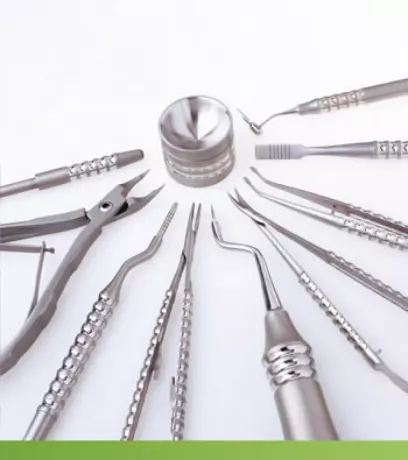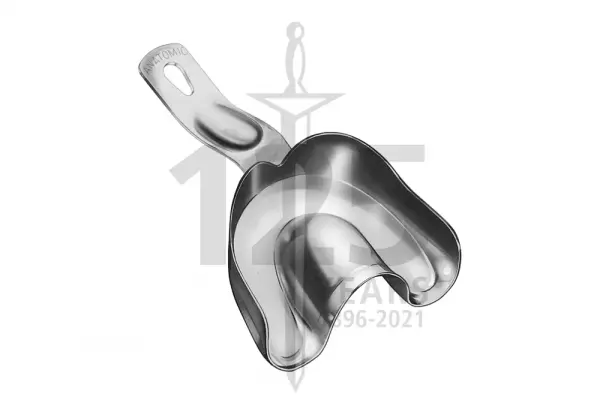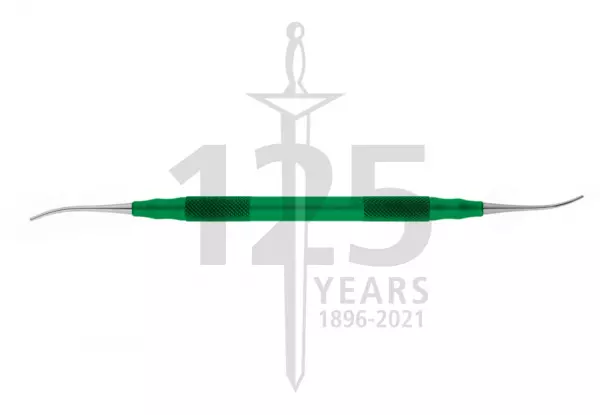
Surgical instruments for oral surgeons
Surgical instruments are an important criterion in the competence of an oral surgeon. The focus is...
Portal and digital medical technology fair of the largest MedTech cluster in Germany

Surgical instruments for oral surgeons
Surgical instruments are an important criterion in the competence of an oral surgeon. The focus is...

Impression Trays - Dental Instruments for...
Impression Trays - Dental Instruments for Conservative Dentistry 28.601.00 IMPRESSIO...

Impression Trays Dental - Tooth Replacement...
Impression Trays Dental - Tooth Replacement / Correction / Orthodontics made by Schwert 4970...

Surgical instruments for cranio-maxillofacial...
Maxillofacial surgery, including cranial surgery, encompasses a wide range which incorpora...

Crown Instruments - Tooth Replacement / Correction...
Crown Instruments - Tooth Replacement / Correction / Orthodontics made by Schwert ...

One of the most important things to remember when creating a dental impression is that you need to use the correct impression tray. If you use the wrong one, you will not be able to capture the full size of an older patient's oral cavity. In addition, the incorrect size of the tray will cause the putty to deform, resulting in an inaccurate final product. Ensure that you thoroughly rinse the teeth before applying the light-bodied material.
There are several different kinds of dental impression trays. The first is the dentate or edentulous variety. Besides this, you can also get a perforated or non-perforated tray. The holes are designed to facilitate the flow of the alginate and ensure a better bonding of the impression material to the tray when it is set. Similarly, the non-perforated variety has no holes to allow the impression material to escape.
Other types of dental impression trays are called quadrant trays, which cover a half arch, and full trajectories for the full arch. They come in different sizes and designs and are often pierced or perforated to promote mechanical locking with the impression. The liquid material is poured into the tray and is then used to create the impression. The material used for the impression will vary depending on the type of material. Some are rigid while others are flexible.
The dental impression trays are available in various sizes. They can be either custom-made or disposable. For instance, custom sized trajectories are generally larger than disposable trajectories. The market for these products is expected to grow by more than 32% annually during the forecast period. There are several factors that will boost the market, including increasing prevalence of periodontal diseases and the presence of numerous market players. The next most important factor will be the cost of edentulous patients.
Different types of tassels will differ in their design. Generally, plastic tassels will fit in a single arch and will fit into the tassel. However, metal tassels are more expensive and are not as durable. They must be replaced every few years, which will lead to the deterioration of your teeth and gums. For this reason, dental tassels should be of good quality and should be made of biocompatible material.
The choice of the material for the tassels will determine the quality of the tassels. The most common material for preliminary impressions is an irreversible hydrocolloid. A hydrocolloid can be either a solid or a liquid. A sol is a solid material that can change between two states. Usually, the polymer is a gel. It can be a liquid or a rigid material, depending on its use.
Become a digital exhibitor yourself in the online portal of the largest and best-known MedTech cluster region in Germany and inform the world of medical technology about your products and services as well as about news, events and career opportunities.
With an attractive online profile, we will help you to present yourself professionally on our portal as well as on Google and on social media.